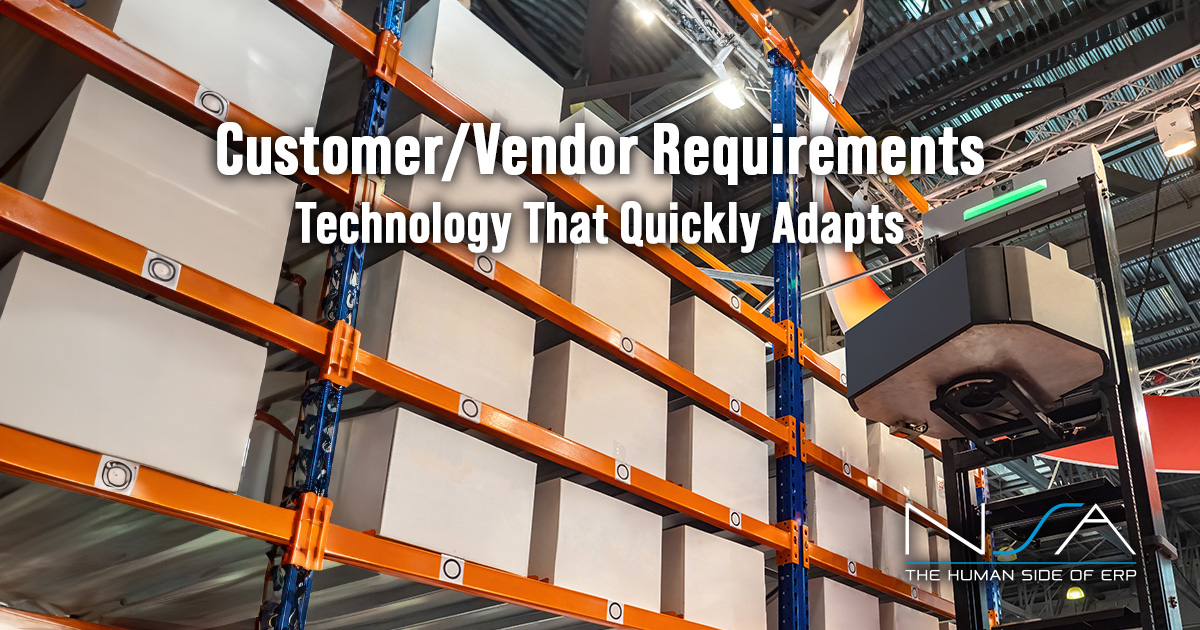Warehouse Automation is the process of automating the movement of inventory into, within, and out of warehouses to customers with minimal human assistance, ensuring business-critical operations meet customer demand. When implemented Warehouse Management System (WMS) automates manual processes, data capture, inventory control, and supports data analysis. The WMS integrates with other solutions to effectively manage and automate tasks across different business and supply chain functions.
A business can eliminate or streamline labor-intensive duties that involve repetitive physical work and manual data entry and analysis. Many businesses utilize a combination of robots and software to replace manual tasks. These products work in concert with existing tools such as inventory management software, leaving warehouse employees more time to focus on more complex duties.
For example, a warehouse employee may load heavy items onto an autonomous mobile robot where the robot then transports the inventory from one end of the warehouse to the other. The software then records the movement of that inventory, keeping current records. Warehouse Automation has thus improved the efficiency, speed, reliability, and accuracy of this task. Some examples of Warehouse Automation include barcode labels and scanning automation, automated guide vehicles, and picking automation.
3 Reasons Warehouse Automation is Good for Business
As businesses grow, warehouses and inventory ultimately expand but the systems in place to monitor and keep track of things do not keep up with that growth. Antiquated systems have a way of going undetected until the hidden costs become so large or inconvenient you’re forced to do something about it. That is where automated systems come into play.
At the core of businesses wanting to become more efficient in handling inventory and warehousing is growth. Automated warehouse systems offer many benefits, though there are three very specific ones:
- Less Space Needed – A warehouse with an automated system in place has been proven to use up to 40 percent less space than a conventional warehouse would, all to store the same number of products. This isn’t just useful to get the most out of your space by storing more product, it’s also useful when looking at expanding your facility and knowing how much land space you’ll actually need. Not having to invest so heavily in larger spaces means you’ll have additional funds leftover to invest in products, marketing or advertising efforts, labor, and especially customer-focused service.
- Reduced Cost and Maintenance – While requiring less space to efficiently store more product saves a certain amount of money, a company is also able to reduce costs associated with energy consumption, leasing costs, labor costs since automated facilities require fewer workers, and overall maintenance. Costs associated with battery charging stations and replacement, cleaning costs, and even lift truck and damage repair are lowered across the board.
- Less Product Waste – Automated facilities can reduce product waste substantially by reducing product damage in general. That is because pallets are handled more smoothly, providing less opportunity for human error to get involved, and stretch wrapping and other materials required to secure the pallets when moving don’t require as much generous application. Also, because automated order picking has proven to be more accurate returns are reduced, as are the associated fuel and operating costs.
You’ve decided to move forward with warehouse automation, now what? Next, you will need to decide the type of automation to implement. Warehouse automation varies from relatively simple to quite complex. Basic automation uses planning, machinery, and vehicles to reduce repetitive tasks. Advanced systems deal with artificial intelligence and robotics. Our team at NSA will guide you on which type of warehouse automation is best for your business. Reach out to us today at (516) 240-6020 and we’ll help you make the leap.



